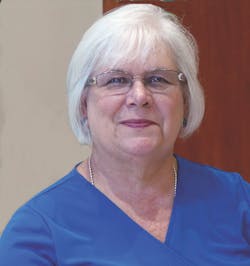The skilled labor shortage plaguing the construction industry includes the dearth of experienced welders. The American Welding Society says the average welding operator is 57 and getting set to retire.
“The shortage of skilled welders in some parts of the country around Louisiana and Texas has reached a point where shipyards have put up billboards in Alabama looking for welders,” says Mary Ruth Johnsen. “Instructors in our local chapters have told us there is such a demand for welders the companies are giving hiring bonuses.”
The Department of Labor projection figures show by 2024, the construction industry will need to add 12,850 more welders each year to keep up with projected growth. Johnsen says the need for welders is regional and is strongest in industry segments that serve construction in infrastructure, energy, and transportation sectors.
The problem is exasperated by welding’s lengthy learning curve. When that average 57-year-old welder retires, he or she walks away with years of experience that a newly certified welder hasn’t developed. Apprentice programs fill that void up to a point, but welding isn’t one of those skills that allows a worker to “fake it ’til you make it.” Hence the trend toward simpler processes and equipment that may help bridge the experience lull until new welders gain more hands-on hours.
Interest in welding as a career is increasing and welding schools are very busy right now, says Johnsen. Manufacturers are expanding their support for the trade and employers are doing more to build hands-on aptitude with new employees.
Lincoln Electric has been training welders since 1917 and is celebrating its 100th year of welding education with a new $30 million Welding Technology Center expansion on its Euclid, Ohio, campus, scheduled to open in 2017. The 130,000-square foot center will double Lincoln’s welding education capacity to 180 welding booths.
Outreach to would-be career welders is expanding, too. Employers and schools are adjusting their recruitment efforts to actively engage women in the trade—and their timing is excellent.
The U.S. Department of Labor estimates women make up about 2 percent of the welders in the country, but that figure is trending up. Within the Millennials, there is a growing community of young women who don’t seem to give much thought to the same social constraints that diverted girls from training for careers in the trades that was found in previous generations. Instead of settling for a more traditional “appropriate” job, as their grandmothers may have had, these young women see no reason not to train for a career that pays them well for their skills, creates confidence in their work, builds a mobile skills foundation for financial independence, and rewards them when they train to improve their skills. The fact that welding is called a nontraditional job for females is viewed as a selling point by these women. That’s a win-win for the industry.
Generating and nurturing interest in learning welding skills is gaining ground in secondary education. Kevin Rawlins with the Aiken County Career and Technology Center in South Carolina teaches welding to grades 10 through 12, and says experience has shown him that female welders are just as good and even better than some of male welders he’s worked with. “They have more hand and eye coordination and dexterity skills,” Rawlins said.
The fact that nontraditional careers pay more isn’t lost on female students. Jose Anaya, dean of the El Camino College community advancement department in Torrance, Calif., says, “What we find in industry is nontraditional careers end up paying a lot more, in the range of 18 to 25 percent higher salaries, so for a woman who wants to get into this field, it can be a very lucrative career choice.”
Community colleges and industry groups are also providing training and career support. El Camino College offers a Women in Industry and Technology (WIT) program designed for women pursuing non-traditional majors and careers. Working with The Institute for Women in Trades, Technology and Science, El Camino College actively recruits female students for their welding training program.





